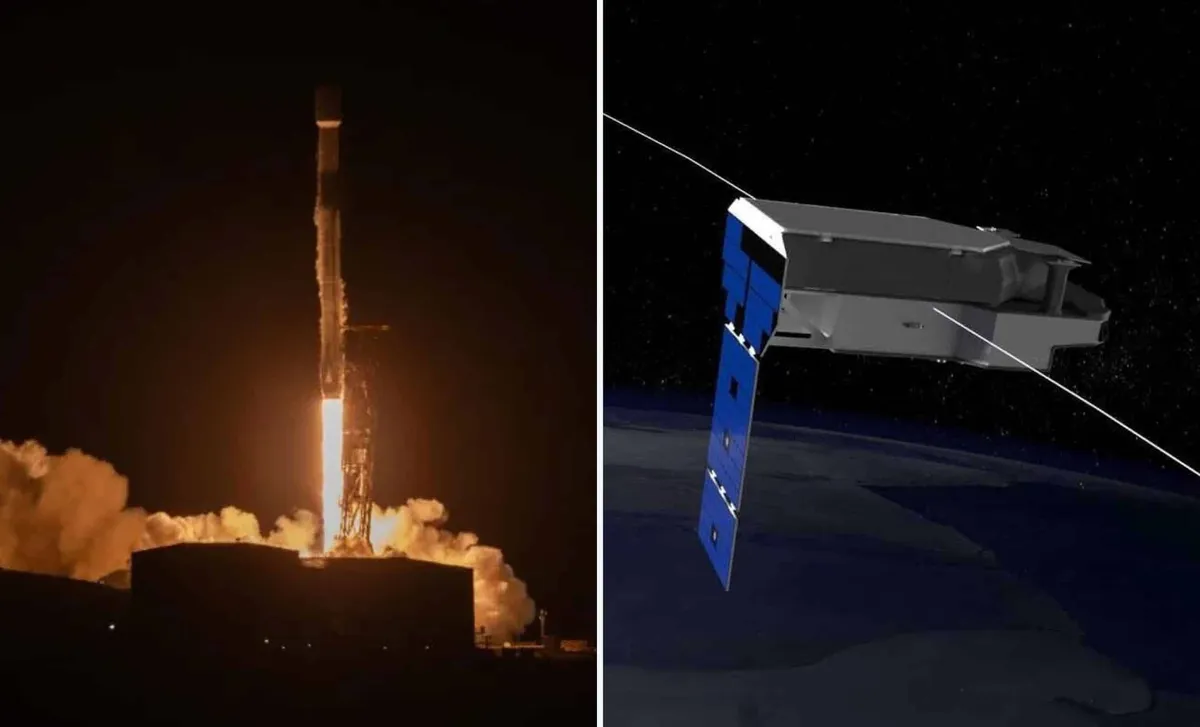
NASA has officially launched its latest space weather mission, PUNCH (Polarimeter to Unify the Corona and Heliosphere), which marks a significant advancement in our ability to monitor and predict solar activity. This innovative mission utilizes four synchronized small satellites, which work collaboratively to provide unprecedented 3D views of the Sun’s corona and to track the evolution of the solar wind—the continuous stream of charged particles emanating from the Sun. Launched aboard a SpaceX Falcon 9 rocket on March 11, 2025, alongside NASA’s SPHEREx observatory, PUNCH is now fully operational and ready to gather critical data.
Over the next two years, this network of satellites will collect real-time data aimed at helping scientists comprehend and predict space weather events. These events, often referred to as solar storms, can severely disrupt satellites, interfere with power grids, and even pose threats to astronaut safety. The PUNCH mission is led by the Southwest Research Institute (SwRI) and is part of NASA’s Explorers Program, managed from the Goddard Space Flight Center.
Space weather is not merely an abstract scientific concept—it has tangible effects on our daily lives. The solar wind, when combined with intense solar flares and coronal mass ejections (CMEs), can trigger geomagnetic storms that significantly impact technology and infrastructure on Earth. Here are some key areas affected:
GPS and Communications: Strong solar storms can disrupt satellite signals, affecting GPS navigation, radio communications, and internet services. Power Grids: High-energy solar events can induce harmful electric currents in power grids, leading to widespread blackouts and damage to electrical systems. Astronaut Safety: Increased solar radiation poses a serious risk to astronauts aboard the International Space Station and during future deep-space missions.By providing more accurate tracking of these solar disturbances, PUNCH aims to enhance forecasting models, ultimately helping to mitigate potential disasters associated with space weather.
Unlike previous space weather missions that primarily focused on point observations of the Sun, PUNCH functions as a synchronized network. The four satellites operate collectively as a “virtual telescope” which allows for continuous 3D imaging of the Sun’s corona—the outermost layer of the Sun’s atmosphere—and its transition into the solar wind. This capability enables scientists to trace solar wind patterns in real-time, providing a more detailed and accurate view of how solar activity propagates through space.
Additionally, the mission will track coronal mass ejections (CMEs)—massive eruptions of solar plasma that can produce shockwaves throughout the solar system. The ability to predict the intensity and trajectory of these events could provide crucial warnings to safeguard satellites, power grids, and various space missions.
The four PUNCH spacecraft are engineered to function cohesively, capturing images multiple times a day. Data collected will be transmitted to Earth via antennas operated by the Swedish Space Corporation, and subsequently processed at the Southwest Research Institute (SwRI) in Boulder, Colorado. Unlike past missions where data access was restricted to specialized researchers, PUNCH will make all its data publicly available in real-time through NASA’s Solar Data Analysis Center at the Goddard Space Flight Center. This commitment ensures that scientists, space agencies, and even amateur astronomers can access the latest information regarding solar activity.
In summary, NASA’s PUNCH mission is set to revolutionize our approach to understanding space weather, enhancing our ability to predict and respond to solar events that could have far-reaching impacts on technology and human safety.